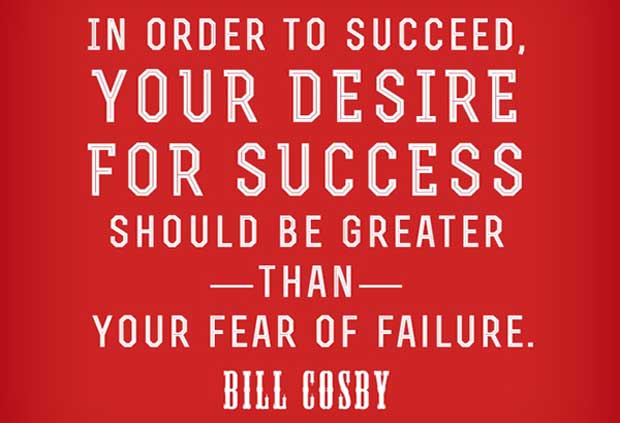Success Advice
The 5 Steps You Must Take Now To Succeed
When Stacey Ferreira and I started 2 Billion Under 20 a little over a year ago, we set out to bring together some of the world’s smartest and most talented Millennials from all walks of life in order to empower the 2 billion people in the world under 20 years old to act on their passions in life.
As young entrepreneurs ourselves, we had already begun the process of figuring out where we could have the most impact and enjoyment in our lives, and as we began collecting stories for 2 Billion Under 20: How Millennials are Redefining Success, Breaking Down Barriers, and Changing the World (forthcoming from St. Martin’s Press, 2015), we saw commonalities in how each of the featured contributors in the book went about pursuing success at a young age.
Although everyone’s path to success is different, and no singular formula can determine one’s ease of achievement, I’ll break down the 5 general steps you must take if you want to be successful as we’ve found through connecting with some of the world’s smartest and most talented young people over the last three years.
1) START
This may sound really simple, but you’ll never achieve anything until you start chasing after your passions in life. Whether you aspire to be an Olympian, start a business, or record your first studio album, you need to just go ahead and begin working on your goals. Too many people, young or old, look to tomorrow to begin work on their dreams. Or, they’ll make excuses as to why they cannot start working on their business ideas on the side, begin working out today, or why their idea will never work instead of just trying to start.
Starting to work on a dream is a 100% commonality shared by all successful people (because they would have never achieved anything if they left their plans “for another day”), and if you are aspiring to do something right now, just go ahead and start! Figure the rest out later.
2) RISK
At one point or another, as you are chasing after your goals, a risk must be taken. There will be obstacles to overcome that require unconventional thinking or a detour from the “safe” path. Taking risk should be seen as another step in chasing success, and almost every achievement known to mankind came with a risk, big or small.
When teenage actor Noah Centineo wanted to boost his acting career, he had to risk leaving his family and friends behind in South Florida in order to move to Los Angeles to pursue his career full-time. Although it may have seemed scary at first, he is now landing roles in Disney channel TV shows and movies as well as nationally-broadcasted commercials for companies like Old Navy and Monopoly. Similarly, computer programmer Jasmine Gao took the risk of dropping out of college to enter the Enstitute apprenticeship program in NYC, where she got the opportunity to work at Bit.ly under Hilary Mason and now works for Mealku.
In your pursuit of success, view risk-taking as an opportunity and not as a fear-rattling inevitability.

3) JOURNEY
If you are pursuing anything worthwhile, the chances of you experiencing a super smooth path is slim to none. So, rather than worry about the ups-and-downs, just journey and embrace the rollercoaster ride as part of the collective experience of finding your passions and working to realize your dreams.
In 5 years, you’ll look back at the times you thought the walls were deteriorating around you and just laugh, so the third step in achieving success is just to journey and go along with the obstacles (and opportunities) thrown your way. This step includes taking care of your health, relationships, and sanity as you go after your dreams, and it also encompasses the persistence it takes to grind out work on difficult days.
4) LEARN
Always be learning. It’s as simple as that. When Conrad Farnsworth developed a nuclear fusion reactor in his garage at just 17 years old (becoming the first person in Wyoming to ever pull off such a feat), he attributed his success mostly to the amount of learning he underwent over years of studying nuclear sciences and attempting to build the machine he ultimately used to split an atom.
Similarly, Mohnish Soundararajan, a young hustler who’s helped bestselling authors like Ryan Holiday, Robert Greene, and Charlie Hoehn in their book marketing efforts, has achieved most of his success to date through rapid learning experiences by working alongside start-ups and authors who could show him the ropes as he offered his services in return. Also, a near-death experience for Mohnish helped him realize exactly what he wanted to pursue, and since that experience, he has shaped what he studies to match his goals in life.
As you pursue your own goals, don’t forget the role of continuous, life-long education in your chase for success.
5) SUCCEED
You can do it! When you make it, celebrate! Even before you reach your goals, embrace a winning attitude and fill your mind with positive thoughts. You have to believe you can succeed, and then make it an action to take instead of an idea to ponder (as the use of a verb and not a noun indicates above) before you can capture your aspirations and dreams. This doesn’t mean become a snob the second you accumulate a credential or accolade, but it does mean surrounding yourself with people who will stimulate your growth and help you succeed at even higher goals than the ones you’ve currently accomplished, at which point you can begin at Step 1 all over again!

Don’t wait to become successful. Whether you and young or old, start taking the necessary actions now to accomplish what you really want out of life pursue what you are most passionate about.
Did You Know
How Skilled Migrants Are Building Successful Careers After Moving Countries
Behind every successful skilled migrant career is a mix of resilience, strategy, and navigating systems built for locals.

Moving to a new country for work is exciting, but it can also be unnerving. Skilled migrants leave behind familiar systems, networks, and support to pursue better job opportunities and a better future for their families. (more…)
Life
10 Research-Backed Steps to Create Real Change This New Year
This New Year could finally be the one where you break old patterns and create real, lasting change.

Every New Year, we make plans and set goals, but often repeat old patterns. (more…)
Change Your Mindset
The Silent Skill That Makes People Respect You Instantly
What truly earns respect and why most people go about it the wrong way

Everybody craves respect but not everyone earns it. Some people believe that a title, years of experience, or a position of authority automatically entitles them to respect. (more…)
Entrepreneurs
The Essential Skills Every Entrepreneur Needs In 2026
Success in the digital age isn’t about luck. It’s about mastering the skills that separate dreamers from doers.

When I was 22 years old, I started my first side hustle as a ghostwriter. (more…)
-

 Shift Your Mindset4 weeks ago
Shift Your Mindset4 weeks ago11 E’s That Define Every Great Leader And Why Most People Miss Them
-

 Did You Know4 weeks ago
Did You Know4 weeks agoThe Success Patterns You Inherited (And Didn’t Notice)
-

 Entrepreneurs3 weeks ago
Entrepreneurs3 weeks agoThe Essential Skills Every Entrepreneur Needs In 2026
-

 Business4 weeks ago
Business4 weeks agoThe Hidden Money Pit in Your Operations (and How to Use It)
-

 Change Your Mindset2 weeks ago
Change Your Mindset2 weeks agoHow to Turn Your Mind Into Your Greatest Asset (Instead of Your Enemy)
-

 Change Your Mindset2 weeks ago
Change Your Mindset2 weeks agoThe Silent Skill That Makes People Respect You Instantly
-

 Life2 weeks ago
Life2 weeks ago10 Research-Backed Steps to Create Real Change This New Year
-

 Tech1 week ago
Tech1 week agoWhat’s in a Name? How to Get Your Domain Right


























1 Comment